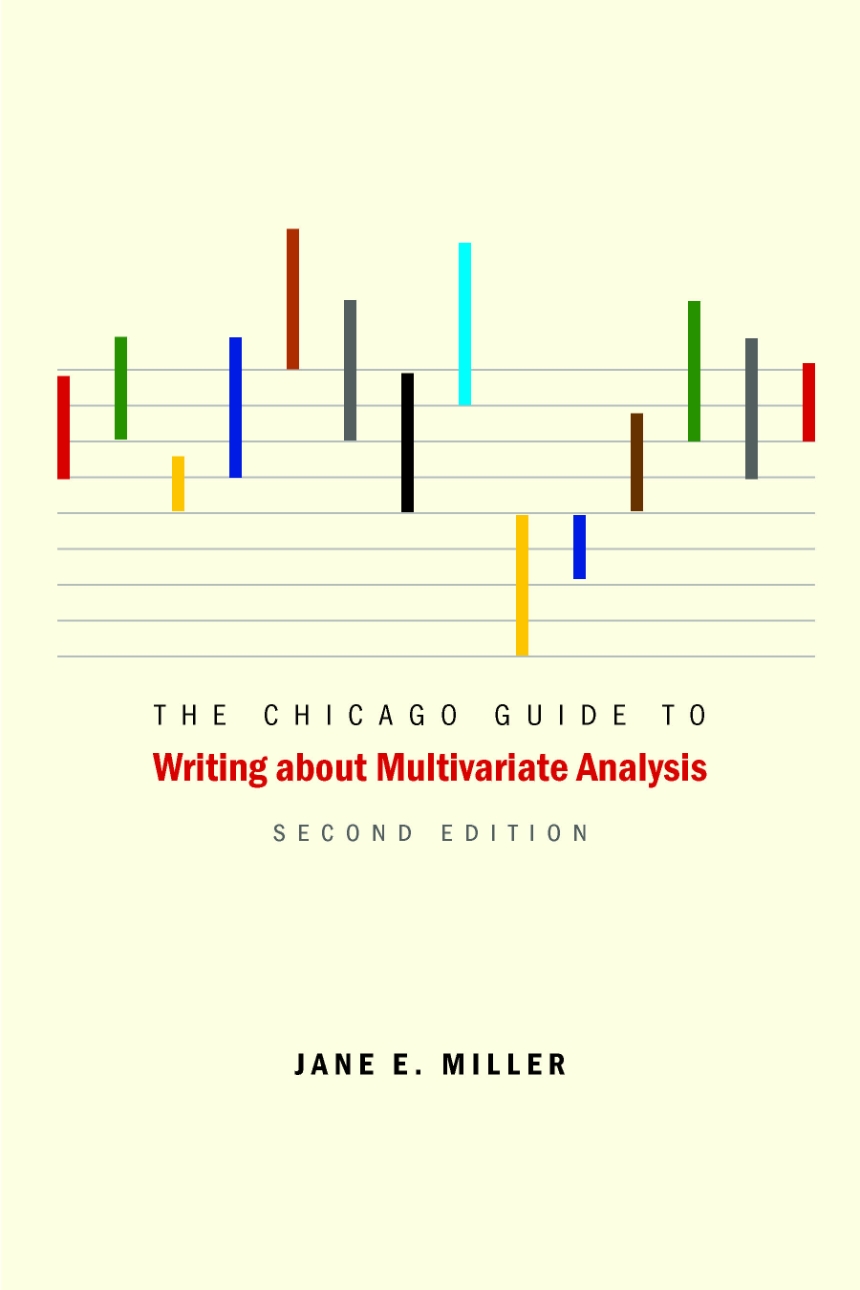The Chicago Guide to Writing about Multivariate Analysis, Second Edition
Second Edition
The Chicago Guide to Writing about Multivariate Analysis, Second Edition
Second Edition
The Chicago Guide to Writing about Multivariate Analysis is the book researchers turn to when looking for guidance on how to clearly present statistical results and break through the jargon that often clouds writing about applications of statistical analysis. This new edition features even more topics and real-world examples, making it the must-have resource for anyone who needs to communicate complex research results.
For this second edition, Jane E. Miller includes four new chapters that cover writing about interactions, writing about event history analysis, writing about multilevel models, and the “Goldilocks principle” for choosing the right size contrast for interpreting results for different variables. In addition, she has updated or added numerous examples, while retaining her clear voice and focus on writers thinking critically about their intended audience and objective. Online podcasts, templates, and an updated study guide will help readers apply skills from the book to their own projects and courses.
This continues to be the only book that brings together all of the steps involved in communicating findings based on multivariate analysis—finding data, creating variables, estimating statistical models, calculating overall effects, organizing ideas, designing tables and charts, and writing prose—in a single volume. When aligned with Miller’s twelve fundamental principles for quantitative writing, this approach will empower readers—whether students or experienced researchers—to communicate their findings clearly and effectively.
576 pages | 2 halftones, 87 figures, 52 tables | 6 x 9 | © 2013
Chicago Guides to Writing, Editing, and Publishing
Guides, Manuals, and Reference: Guides for Scholars, Guides for Scientists
Reviews
Table of Contents
Preface
Chapter 1 Introduction
Suggested Course Extensions
Chapter 2 Seven Basic Principles
Problem Set
Suggested Course Extensions
Solutions
Chapter 3 Causality, Statistical Signifi cance, and Substantive Significance
Problem Set
Suggested Course Extensions
Solutions
Chapter 4 Five More Technical Principles
Problem Set
Suggested Course Extensions
Solutions
Chapter 5 Creating Eff ective Tables
Problem Set
Suggested Course Extensions
Solutions
Chapter 6 Creating Eff ective Charts
Problem Set
Suggested Course Extensions
Solutions
Chapter 7 Choosing Eff ective Examples and Analogies
Problem Set
Suggested Course Extensions
Solutions
Chapter 8 Basic Types of Quantitative Comparisons
Problem Set
Suggested Course Extensions
Solutions
Chapter 9 Quantitative Comparisons for Multivariate Models
Problem Set
Suggested Course Extensions
Solutions
Chapter 10 The “Goldilocks Problem” in Multivariate Regression
Problem Set
Suggested Course Extensions
Solutions
Chapter 11 Choosing How to Present Statistical Test Results
Problem Set
Suggested Course Extensions
Solutions
Chapter 12 Writing Introductions, Conclusions, and Abstracts
Problem Set
Suggested Course Extensions
Solutions
Chapter 13 Writing about Data and Methods
Problem Set
Suggested Course Extensions
Solutions
Chapter 14 Writing about Distributions and Associations
Problem Set
Suggested Course Extensions
Solutions
Chapter 15 Writing about Multivariate Models
Problem Set
Suggested Course Extensions
Solutions
Chapter 16 Writing about Interactions
Problem Set
Suggested Course Extensions
Solutions
Chapter 17 Writing about Event History Analysis
Problem Set
Suggested Course Extensions
Solutions
Chapter 18 Writing about Hierarchical Linear Models
Problem Set
Suggested Course Extensions
Solutions
Chapter 19 Speaking about Multivariate Analyses
Problem Set
Suggested Course Extensions
Solutions
Chapter 20 Writing for Applied Audiences
Problem Set
Suggested Course Extensions
Solutions
